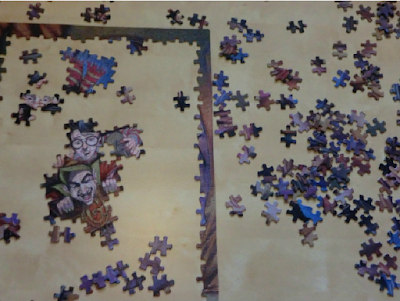A typical morada.
https://en.wikipedia.org/wiki/Penitentes_(New_Mexico)
There were 6 (six) of us if I recall right. There was don Jose Gutierrez who belonged at the morada in San Juan, New Mexico in San Miguel County. Esquipula Padilla belonged to the same morada.
Then there was don Pablo Salmeron who belonged to the morada in El Guzano (South San Isidro). He was the only member from Rowe there.
Myself, my brother and Nicasio Archuleta belonged to the morada in Las Colonias, San Miguel County. There were two moradas in Las Colonias, one near town and the other at "el Cerrito". We, form Rowe belonged to the one at el Cerrito.
Some hermanos in a morada somewhere in New Mexico
As illustrated by the above narrative, not all towns had a morada and some had more than one. I have no idea why, could have been politics, could have been the need/want to keep the numbers of hermanos to a manageable number. Anyway, Rowe did not have its own morada.
I recall my time with this group as one of the best times of my life, los Hermanos were the best of the best of the people in the area. It was one of the cherished things I left when my religious beliefs went "south". Years later I ran into the Hermano Mayor and he told me my place at the morada was still there, waiting for me should I decide I wanted to rejoin the group..... but I would have to rejoin the Catholic Church and go to confession and receive the Eucharist before I could do that.
Today when I read about the "Penitentes" I do not recognize the folks some write about. We were a very private group and only members and families were ever invited to the morada and that was usually during Holy Week in Lent. The remainder of the year only members were present unless someone bought a "guest". Usually guests were cleared in advance. Our morada was very remote and 99% could/would not undertake the trek without some means other than walking.
Needless to say, I have never been back. But I do miss the morada, los hermanos and our get tohethers.











